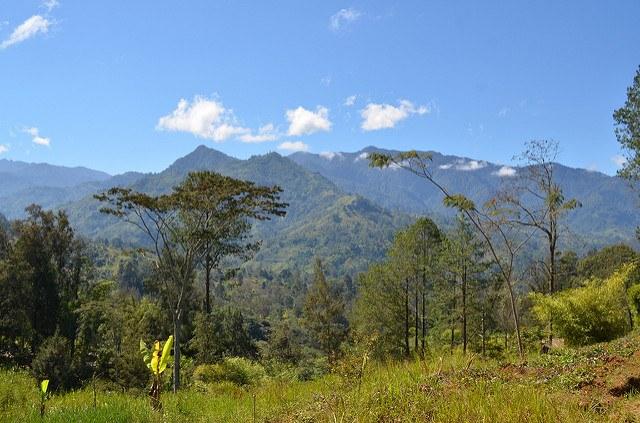
Three months have passed since the historic COP21 talks concluded in Paris with a landmark global climate change agreement. It sure does seem like history, as many of the headlines that flowed back in December have slowed down to a trickle. Nevertheless, the 195 countries that agreed to submit formal climate action plans or INDCs (intended nationally determined contributions) have staff hard at work in national capitals across the globe, doing what the U.N. hopes is deriving their nations’ individual climate plans.
The first nation to actually submit an NDC -- as in, not an intended, but actual agreement -- is Papua New Guinea, a nation of 7 million people that shares a massive island (New Guinea) with Indonesia, and rests above Australia’s northern frontier. One of the poorest countries on earth, Papua New Guinea is also rich in mineral resources. Its remote location, however, in addition to the lack of infrastructure, have been massive hurdles to economic development.
Nevertheless, Papua New Guinea’s government says it is already confronting the impacts of climate change out of necessity. In 2008, residents of the Carteret Islands, an atoll northeast of the country’s main island of New Guinea, attracted headlines for what many described as the world’s first climate change refugees. Sea-level rise of about four inches (10 cm) have caused high tides to flood farms and make life near impossible for the islands’ estimated 2,600 citizens. News coverage has been spotty, but the relocation of these residents has evidently been a slow process.
Indigenous communities throughout the country have also experienced climate change in their daily lives. Conservation International is one organization that has sent researchers to learn more. One of them, Dr. Bruce Beehler, has observed how changing weather patterns over the past 30 years has affected the type of food crops locals can grow, while the types of pests with which they had to deal have also evolved over time. A region that once had well defined seasons is now dealing with climate volatility, with the results ranging from more infectious diseases to more extreme rainfall.
So what does Papua New Guinea’s government intend to do about climate change? Well, quite frankly, not much, because part of the challenge is the country’s “paucity” of data. This is a country that has few resources and will have to look to the world’s richer countries to fund almost any climate change mitigation and adaptation plans. The country’s Climate Change & Development Authority (the web site of which is often down) insists there are ample opportunities in renewable energy, energy efficiency, transportation and agro-forestry. The country’s report cites clean energy opportunities are found in hydro-power and geothermal sources, but most of them are in remote locations. The plan’s authors state the country’s electricity sector could become carbon-free by 2030, but again, details are rather sketchy.
In fairness, this is a country where 90 percent of its people live in the informal economy, and live an existence without access to fossil fuels. The country’s capital and largest urban center, Port Moresby, has have some promising climate adaptation opportunities with its population of over 350,000. For NGOs and intergovernmental organizations that have any interest in climate-related projects here, convincing people to work in this corner of the earth will be a challenge: a few years back the Economist Intelligent Unit ranked the capital the 139th world’s most livable city—within a list of 140. Considering its largely indigenous and rural population, however, forestry projects will be integral to Papua New Guinea contributing to global climate adaptation, if at all. Whether or not carbon credit programs for reforestation projects within Papua New Guinea will interest businesses and NGOs in the coming years will prove to be one example of gauging whether the NDCs will be an effective tool for nudging the world towards a low-carbon economy.
Image credit: eGuide Travel (Flickr)

Leon Kaye has written for 3p since 2010 and become executive editor in 2018. His previous work includes writing for the Guardian as well as other online and print publications. In addition, he's worked in sales executive roles within technology and financial research companies, as well as for a public relations firm, for which he consulted with one of the globe’s leading sustainability initiatives. Currently living in Central California, he’s traveled to 70-plus countries and has lived and worked in South Korea, the United Arab Emirates and Uruguay.
Leon’s an alum of Fresno State, the University of Maryland, Baltimore County and the University of Southern California's Marshall Business School. He enjoys traveling abroad as well as exploring California’s Central Coast and the Sierra Nevadas.














